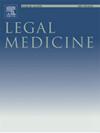使用Powersoil®Pro从蝇幼虫(目:双翅目)中恢复人类DNA
IF 1.4
4区 医学
Q3 MEDICINE, LEGAL
引用次数: 0
摘要
法医昆虫学,在刑事和民事调查中使用昆虫,通常与估计死后间隔(PMI)有关。在腐烂的尸体上发现的双翅目幼虫可用于PMI估计,并作为人类DNA的潜在来源,以识别个体并建立现场与受害者的联系。将苍蝇幼虫用于多种用途的能力将增加它们的证据价值并有助于调查。本研究探讨了使用DNeasy®Powersoil®Pro (QIAGEN)与各种法医基因分型方法配对,以评估有用的人类和苍蝇DNA的恢复。在德克萨斯州东南部应用法医科学(STAFS)设施,从尸体和整只苍蝇幼虫中收集苍蝇幼虫,以加工作物。使用Quantifiler™Trio (Applied Biosystems™)对人类DNA进行定量,使用Investigator®24plex QS (QIAGEN)恢复短串联重复序列(STR)谱。对人和蝇幼虫线粒体DNA分别进行了HVI、II和CO1的测序。还尝试使用ForenSeq®中流砥柱SE进行基因分型,以评估从蝇幼虫中提取的人类DNA使用下一代测序的可能性。获得了作物幼虫和全蝇幼虫的全部和部分STR谱。人类mtDNA分析是成功的,恢复了STR分型失败样本的完整序列和单倍群。CO1测序和主体SE为调查目的提供了额外的信息。PMI估计是通过物种特定发育和总身体评分(TBS)提供的。蝇幼虫作为人类DNA的来源,可以让实验室尝试对提取物进行各种基因分型方法,以帮助调查。本文章由计算机程序翻译,如有差异,请以英文原文为准。
Recovery of human DNA from fly larvae (Order: Diptera) using Powersoil® Pro
Forensic entomology, the use of insects in criminal and civil investigations, is commonly associated with the estimation of the postmortem interval (PMI). Dipteran larvae found on decomposing bodies can be used for PMI estimations, and as a potential source of human DNA to identify individuals and establish scene-to-victim connections. The ability to use fly larvae for multiple purposes would increase their evidentiary value and help investigations. This study investigates the use of DNeasy® Powersoil® Pro (QIAGEN) paired with various forensic genotyping methods to assess the recovery of useful human and fly DNA. Fly larvae were collected at the Southeast Texas Applied Forensic Science (STAFS) Facility from cadavers to process crops and whole fly larvae. Human DNA was quantified using Quantifiler™ Trio (Applied Biosystems™) and short tandem repeat (STR) profiles were recovered with Investigator® 24plex QS (QIAGEN). Human and fly larval mitochondrial DNA were sequenced for HVI and II and CO1, respectively. Genotyping with ForenSeq® MainstAY SE was also attempted to assess the possibility of using next generation sequencing on human DNA recovered from fly larvae. Full and partial STR profiles from crop and whole fly larvae were recovered. Human mtDNA analysis was successful, recovering full sequences and haplogroups for samples that failed STR typing. CO1 sequencing and MainstAY SE yielded additional information for investigative purposes. PMI estimates were provided using species specific development and Total Body Score (TBS). Fly larvae as a source of human DNA can allow laboratories to attempt various genotyping methods on an extract to aid investigations.
求助全文
通过发布文献求助,成功后即可免费获取论文全文。
去求助
来源期刊

Legal Medicine
Nursing-Issues, Ethics and Legal Aspects
CiteScore
2.80
自引率
6.70%
发文量
119
审稿时长
7.9 weeks
期刊介绍:
Legal Medicine provides an international forum for the publication of original articles, reviews and correspondence on subjects that cover practical and theoretical areas of interest relating to the wide range of legal medicine.
Subjects covered include forensic pathology, toxicology, odontology, anthropology, criminalistics, immunochemistry, hemogenetics and forensic aspects of biological science with emphasis on DNA analysis and molecular biology. Submissions dealing with medicolegal problems such as malpractice, insurance, child abuse or ethics in medical practice are also acceptable.
 求助内容:
求助内容: 应助结果提醒方式:
应助结果提醒方式:


